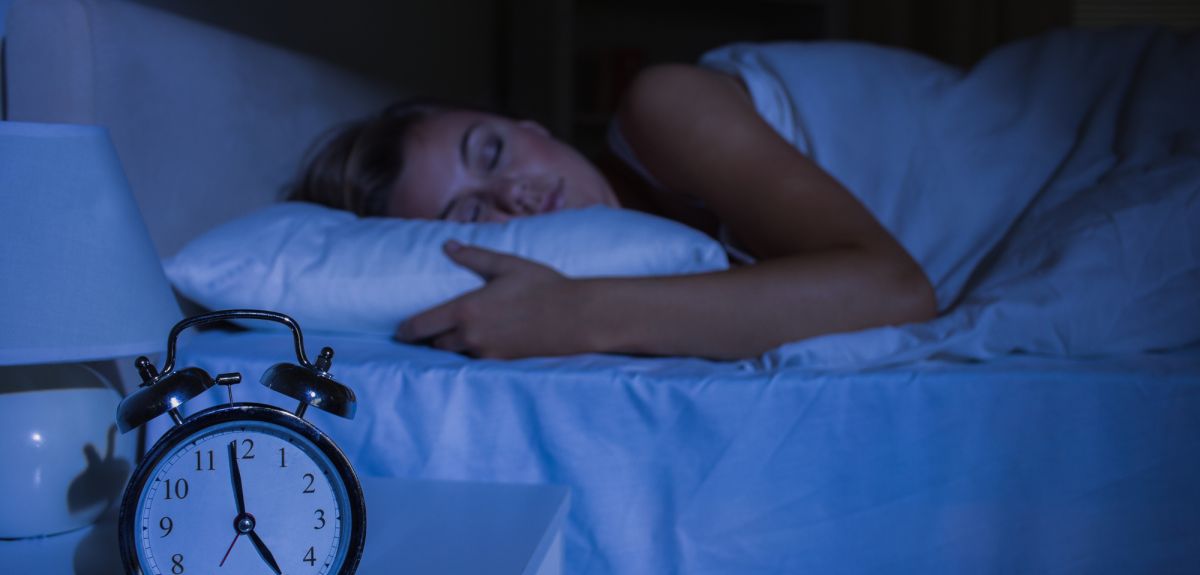
Scientists identify the switch that says it's time to sleep
The switch in the brain that sends us off to sleep has been identified by researchers at Oxford University’s Centre for Neural Circuits and Behaviour in a study in fruit flies.
The switch works by regulating the activity of a handful of sleep-promoting nerve cells, or neurons, in the brain. The neurons fire when we're tired and need sleep, and dampen down when we're fully rested.
'When you’re tired, these neurons in the brain shout loud and they send you to sleep,' says Professor Gero Miesenböck of Oxford University, in whose laboratory the new research was performed.
Although the research was carried out in fruit flies, or Drosophila, the scientists say the sleep mechanism is likely to be relevant to humans.
Dr Jeffrey Donlea, one of the lead authors of the study, explains: 'There is a similar group of neurons in a region of the human brain. These neurons are also electrically active during sleep and, like the flies' cells, are the targets of general anaesthetics that put us to sleep. It's therefore likely that a molecular mechanism similar to the one we have discovered in flies also operates in humans.'
The researchers say that pinpointing the sleep switch might help us identify new targets for novel drugs – potentially to improve treatments for sleep disorders.
But there is much still to find out, and further research could give insight into the big unanswered question of why we need to sleep at all, they say.
'The big question now is to figure out what internal signal the sleep switch responds to,' says Dr Diogo Pimentel of Oxford University, the other lead author of the study. 'What do these sleep-promoting cells monitor while we are awake?
'If we knew what happens in the brain during waking that requires sleep to reset, we might get closer to solving the mystery of why all animals need to sleep.'
The findings are reported in the journal Neuron. The work of the Centre for Neural Circuits and Behaviour is funded by the Wellcome Trust and the Gatsby Charitable Foundation. This study was also supported by the UK Medical Research Council, the US National Institutes of Health, and the Human Frontier Science Program.
The body uses two mechanisms to regulate sleep. One is the body clock, which attunes humans and animals to the 24 hour cycle of day and night. The other mechanism is the sleep 'homeostat': a device in the brain that keeps track of your waking hours and puts you to sleep when you need to reset. This mechanism represents an internal nodding off point that is separate from external factors. When it is turned off or out of use, sleep deficits build up.
'What makes us go to sleep at night is probably a combination of the two mechanisms,' says Professor Miesenböck. 'The body clock says it's the right time, and the sleep switch has built up pressure during a long waking day.'
The work in fruit flies allowed the critical part of the sleep switch to be discovered. 'We discovered mutant flies that couldn't catch up on their lost sleep after they had been kept awake all night,' says Dr Jeffrey Donlea.
Flies stop moving when they go to sleep and require more disturbance to get them up. Sleep-deprived flies are prone to nodding off and are cognitively impaired – they have severe learning and memory deficits, much as sleep loss in humans leads to problems.
Professor Miesenböck says: 'The sleep homeostat is similar to the thermostat in your home. A thermostat measures temperature and switches on the heating if it’s too cold. The sleep homeostat measures how long a fly has been awake and switches on a small group of specialized cells in the brain if necessary. It’s the electrical output of these nerve cells that puts the fly to sleep.'
In the mutant flies, the researchers were able to show a key molecular component of the electrical activity switch is broken and the sleep-inducing neurons are always off, causing insomnia.
 Expert Comment: Can Europe hold the line of liberal democracies?
Expert Comment: Can Europe hold the line of liberal democracies?
 Oxford launches first human aerosol TB challenge trial
Oxford launches first human aerosol TB challenge trial
 Rees Centre report reveals challenges faced by Black and Asian kinship carers
Rees Centre report reveals challenges faced by Black and Asian kinship carers
 Expert Comment: The Modern Slavery Act at 10 – what have we learnt for human rights?
Expert Comment: The Modern Slavery Act at 10 – what have we learnt for human rights?
 A sparse memory is a precise memory
A sparse memory is a precise memory